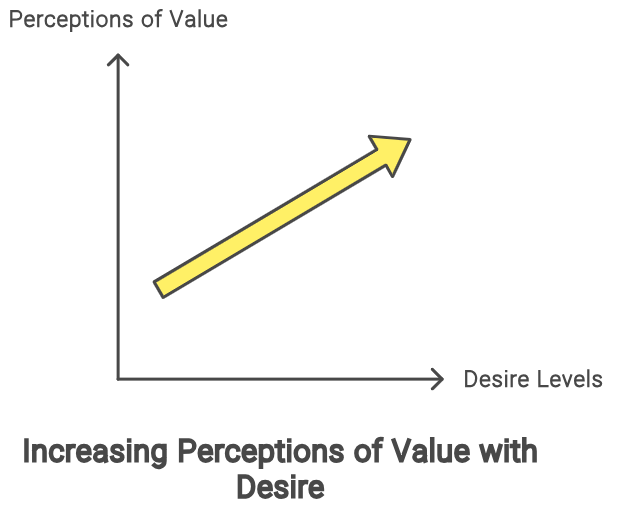One thing all human beings share in common is the everlasting presence of desire. Humans are a collection of desires. We live to desire and desire is proof of life. We desire connection. We desire safety. We desire nourishment. We desire recognition and appreciation. We never stop desiring. When one desire is fulfilled, a new desire shows up. We are constantly climbing the ladder or spiral with our desire.
It’s because of desire that marketing works. It’s because of desire that marketing can exist. As such, although marketing is often described as the set of activities that create and deliver value to customers, there is another way to approach marketing. At Ortega Group, we see marketing as the art and science that recognizes desire, cultivates that desire and proceeds to fulfil that desire.
Marketing that exists to create perceptions of value (both tangible and intangible) for the purpose of creating that never-ending spiral of desire. Desire is often led through the spiral of these perceptions of value. Each component of a spiral speaks to a perception of value. That value can be tangible or intangible. It can be touched, felt, or just imagined.
Thus, great marketing is about an understanding of desire. Great marketing seeks to know the unfulfilled desires of human beings. The market gap exists within the unfulfilled desires of human beings.
Human desire often exists on the spectrum of pain and pleasure, and the spectrum of certainty and uncertainty. Humans seek certainty. Yet when they have certainty, they also seek uncertainty. These expressions of uncertainty can be seen as adventure, mystery, scarcity. Humans also seek pleasure, they run from pain. Yet, there are also scenarios where humans derive pleasure from pain. It’s the role of the marketer to understand these nuances. While one man runs a painful ultramarathon to seek pleasure, another will go on a drinking spree to derive pleasure. One is painful in the moment; another is painful post the participation.

It’s true that marketing is about value. But we need to redefine value and ask; ‘how do we create desire in this product or service?’ For desire is constantly trying to move towards itself. Desire recognizes itself. When human desire can recognize itself in a product or service, it will move towards that product. Desire is a form of identification with the other. What is the marketer trying to do? It’s to create touch points of identification, where a consumer can say, I actually see myself in that which I am purchasing. They are not just purchasing a product; they are purchasing an identity. They are purchasing a part of themselves.
Desire is often better understood through the erotic or sexual perspective. Sex is the peak of desire. Thus, we can say that ultimately value is how we create sexual allure in an object. The role of a marketer is that of creation of desire, recognition of desire, cultivation of desire, and continuous reproduction of desire. A marketer must understand desire.
As Zizek said, desire’s raison d’etre is not to realize its goal, to find full satisfaction but to reproduce itself as desire. That’s why in the marketing spiral of desire (as conceptualized by Ortega), there’s no end to desire, it just keeps moving from one smaller spiral to a larger spiral. And that process is continuous.
As we approach marketing from this perspective of desire, we must also recognize Rene Girard’s work on Mimesis. Girard said, “man is the creature that doesn’t know what do desire.” As such, the role of marketing is to also teach consumers what to desire. And the magic of marketing is that consumers can be taught to desire anything. I repeat, consumers can be taught to desire anything. Thus, the marketer’s field of play is within the consumer’s imagination. The goal here is that even when a consumer has purchased your product, it should not simply fulfil their desire, it should create new desire, a new longing, a new hunger. It should reproduce desire.
Consider that this is a paradigm shift in how we approach marketing in Uganda. We must think more from the perspective of desire. We must understand desire better. We must dig the pits of desire and learn more. We must score campaigns based on this desire factor. We must score products based on their desirability. Desire, desire, desire. A marketer must always think desire first. Can this be desired? What would it take for this product to be desired? That’s the first question of a marketer. What would it take for the target consumer to desire this product or service? When desire is misunderstood or under-served, then marketing has failed its core purpose.

